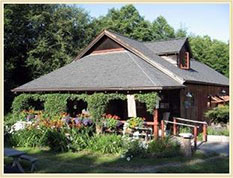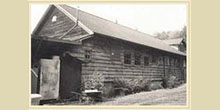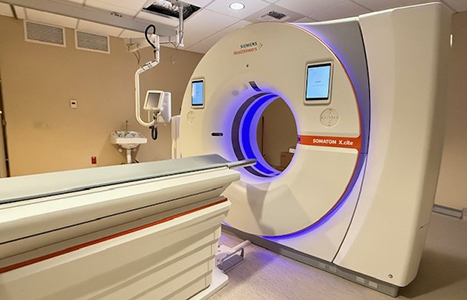— from Tom Welch —
 In support of the Olga Strawberry Council’s “Grand Push to Complete” the Olga Artworks Building, I offer some notes on the history of this iconic structure, and its importance to our community. Whether you know it or not, strawberries play an important role in the history of the San Juan Islands.
In support of the Olga Strawberry Council’s “Grand Push to Complete” the Olga Artworks Building, I offer some notes on the history of this iconic structure, and its importance to our community. Whether you know it or not, strawberries play an important role in the history of the San Juan Islands.
If you look directly to the east from the Olga-Doe Bay area of Orcas Island, you will see Cypress Island. When Lieutenant Broughton sailed the Brig “Chatham”along the eastern shore of Orcas Island during Captain Vancouver’s epic Voyage of Discovery in 1792, he passed through and named Obstruction Pass. Losing a sounding lead in the Pass, he then sailed east to Cypress Island. Going ashore, the crew delighted in the ripe wild strawberries they found, naming Strawberry Bay for their luscious discovery. By the time their ship was joined by Vancouver’s flagship, which had been to the south exploring the body of water that would become known as Puget Sound, the season had passed and the berries were gone. Strawberry Bay remains, as any map will show.
Many people grew strawberries in the Olga – Doe Bay area, Glen Rodenberger predominant among them. George Loomis, Oscar Carlson, Merton Christianson, and Henry Leatherwood were included among the other major growers. Because the rough trip to the cannery in Bellingham damaged too much of the island fruit, a cooperative was formed and the Barreling Plant was built in 1938. The cooperative had 23 members growing berries on more than 450 local acres.
Neighbors have spoken of times during the Great Depression of the 1930’s, when work of any sort could not be found in Seattle, but there was plenty of work at the Strawberry Barreling Plant during berry season. Imagine – no work in Seattle, but plenty in Olga! Doris Boyer, sister of Lucille Willis and a treasured neighbor who has since passed, once remarked to me how difficult seeking work had been for her in Seattle, and how quickly she’d found work on the island. The island, with its green fields and trees overlooking blue water, must have seemed a virtual paradise after weeks of hilly Seattle streets and slamming doors.
Glen Rodenberger grew Marshall strawberries, ‘Fragaria Avanassa’, a species variety discovered by E.F. Marshall in 1890 and known for exceptional taste and firmness. Marshall strawberries were called “ the best eating strawberry in America”, and were extremely popular. Marshall strawberries flourished in Pacific Northwest berry patches throughout the early 20th century, but were devastated by imported viruses after World War Two. Sadly, these strawberries have now almost completely disappeared from private and commercial horticulture.
Beginning in 1934, Rodenberger grew certified Marshall plants. His one acre of certified plants in 1934 grew by 1940 to 27 acres and sales of 2,242,000 certified plants to buyers in Oregon, Idaho, and Montana. He employed 90 persons for two months digging, trimming, and grading, and it took 300 pickers to harvest the crop. Fourteen more worked at the Barreling Plant. In 1940 the strawberry business was second only to the tourist business on Orcas island.
The ‘pack’ at the Barreling Plant for 1940 was over 700 barrels weighing 425 pounds apiece, and 250 tins weighing 300 pounds each, for a total of 200 tons of strawberries. From 10 to 13 tons were shipped each day for many weeks, carried by truck to the mainland via the Obstruction Pass Ferry. Trucked to the National Fruit Canning Company’s cold storage facility in Bellingham, the berries were frozen solid and shipped all over the country.
The Olga Artworks, formerly the strawberry barreling plant, still anchors the landscape at the foot of the Olga Hill, bracing our few roads and announcing that you’ve reached Olga after trying to put your foot through the brake pedal on the way down the hill. (You can imagine how folks felt back in wagon days when they faced climbing the hill!) The building has been lovingly maintained by the Olga Strawberry Council, and presents a warm and welcoming appearance.
The Olga Strawberry Council’s “Grand Push to Complete” the fundraising campaign ends on February 28, 2015. The Council has preserved an iconic structure that speaks of the values and times that are so dear to us, and has helped preserve an important window on the past. I urge you to help them complete their project by making a donation at www.olgastrawberrycouncil.org.
The Target Date for completion of fundraising is February 28, so your early donation will be greatly appreciated.
**If you are reading theOrcasonian for free, thank your fellow islanders. If you would like to support theOrcasonian CLICK HERE to set your modestly-priced, voluntary subscription. Otherwise, no worries; we’re happy to share with you.**








